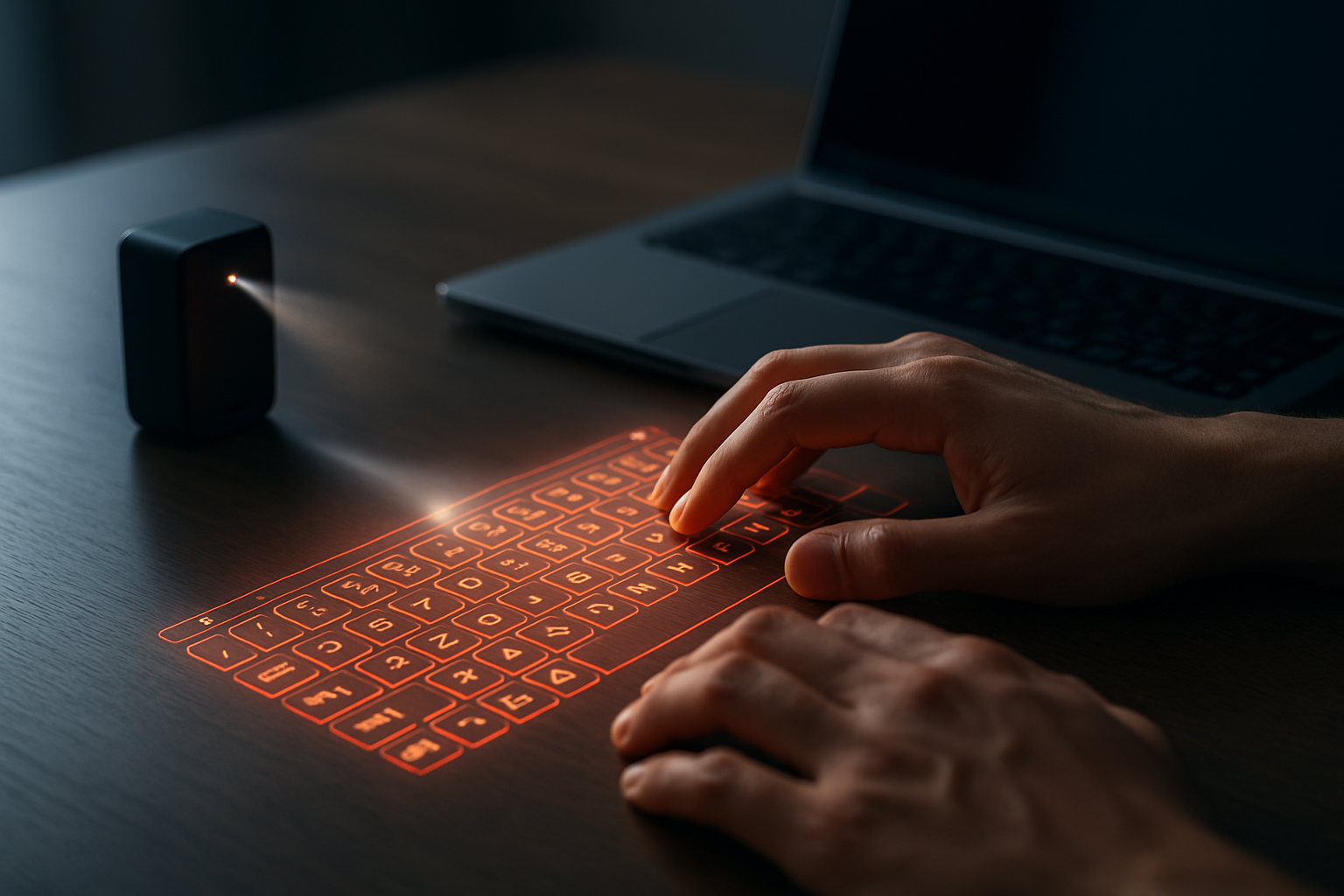Holographic Keyboards: Typing in Thin Air
In a world where technology continues to push boundaries, holographic keyboards are emerging as a futuristic input method that could revolutionize how we interact with our devices. These ethereal interfaces project a virtual keyboard onto any flat surface, allowing users to type without physical keys. As we delve into this cutting-edge technology, we'll explore its potential to transform computing, its current limitations, and the exciting possibilities it holds for the future of human-computer interaction.

The magic happens when users interact with this projected image. Infrared sensors detect the position of fingers as they “press” the virtual keys. These sensors create an invisible plane just above the projected keyboard, and when a finger breaks this plane, it registers as a keystroke. Advanced algorithms then interpret these movements, translating them into text input for the connected device.
Current Market Offerings
While holographic keyboards might sound like science fiction, they’re already available for purchase. Companies like Celluon and Serafim have released consumer-ready products, with prices ranging from $100 to $200. These devices are typically small, portable projectors that connect to devices via Bluetooth or USB.
The Celluon Epic, for instance, projects a full-sized QWERTY keyboard and even includes a virtual touchpad for mouse control. Serafim’s Keybo, on the other hand, doubles as a standalone projector for displaying content from your smartphone. These products are positioning themselves as versatile tools for mobile professionals and tech enthusiasts alike.
Advantages Over Traditional Keyboards
Holographic keyboards offer several compelling advantages over their physical counterparts. Perhaps the most obvious is their portability. Without the need for physical keys, these devices can be incredibly compact, easily fitting into a pocket or small bag. This makes them ideal for travelers or anyone looking to minimize their tech footprint.
Another significant benefit is hygiene. In a world increasingly conscious of germ transmission, a keyboard that doesn’t accumulate dirt, dust, or bacteria could be a game-changer in shared spaces like offices or libraries. Additionally, the lack of moving parts means these keyboards are potentially more durable and resistant to spills or damage.
Challenges and Limitations
Despite their futuristic appeal, holographic keyboards face several hurdles before they can become mainstream. The most significant challenge is the lack of tactile feedback. Traditional keyboards provide physical resistance and auditory cues that help users type accurately and quickly. Without these sensory inputs, many users find holographic keyboards less intuitive and more prone to errors.
Lighting conditions also play a crucial role in the functionality of these devices. Bright ambient light can make the projected keyboard difficult to see, limiting their usefulness in outdoor settings. Furthermore, the need for a flat, unobstructed surface can be a constraint in certain environments.
The Future of Holographic Input
As technology advances, we can expect significant improvements in holographic keyboard design. Researchers are exploring ways to incorporate haptic feedback, potentially using ultrasonic waves to create the sensation of pressing physical keys. This could dramatically enhance the user experience and typing accuracy.
Integration with augmented reality (AR) systems is another exciting possibility. Imagine typing on a virtual keyboard that only you can see through AR glasses, eliminating the need for a projection surface altogether. This could pave the way for truly immersive and portable computing experiences.
Implications for Computing and Beyond
The development of holographic keyboards has implications that extend far beyond typing. This technology could be adapted for virtual musical instruments, allowing musicians to play pianos or synthesizers in mid-air. In medical settings, it could provide a sterile input method for surgeons or lab technicians working in controlled environments.
As we move towards more immersive computing experiences, holographic interfaces could become a key component of how we interact with digital information. From manipulating 3D models to controlling smart home devices with gesture-based commands, the possibilities are vast and exciting.
Conclusion
Holographic keyboards represent a fascinating convergence of optics, sensor technology, and computer science. While they’re still in their infancy, these devices offer a glimpse into a future where our interactions with technology become increasingly fluid and untethered from physical constraints. As the technology matures and overcomes current limitations, we may find ourselves typing, swiping, and gesturing in thin air as naturally as we use traditional keyboards today. The journey from science fiction to everyday reality is well underway, and holographic keyboards are at the forefront of this exciting transition.





